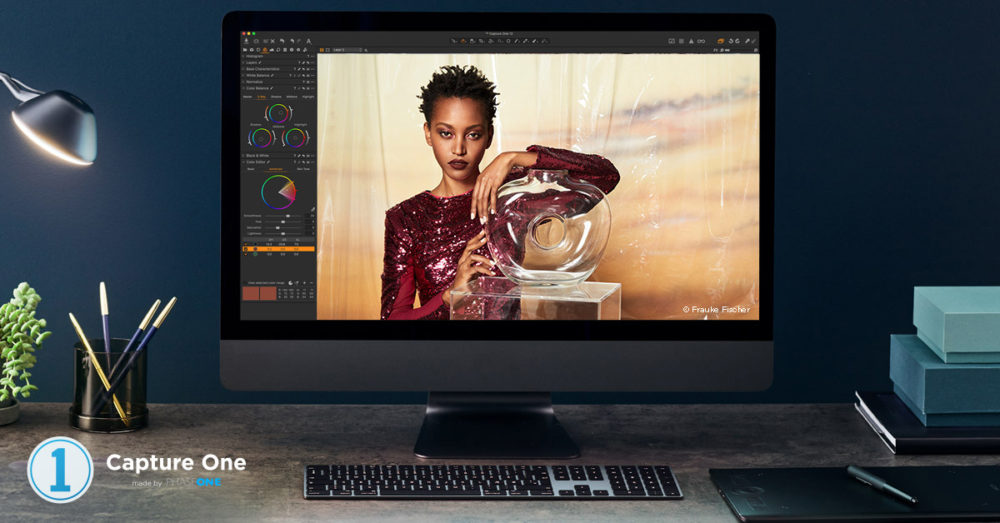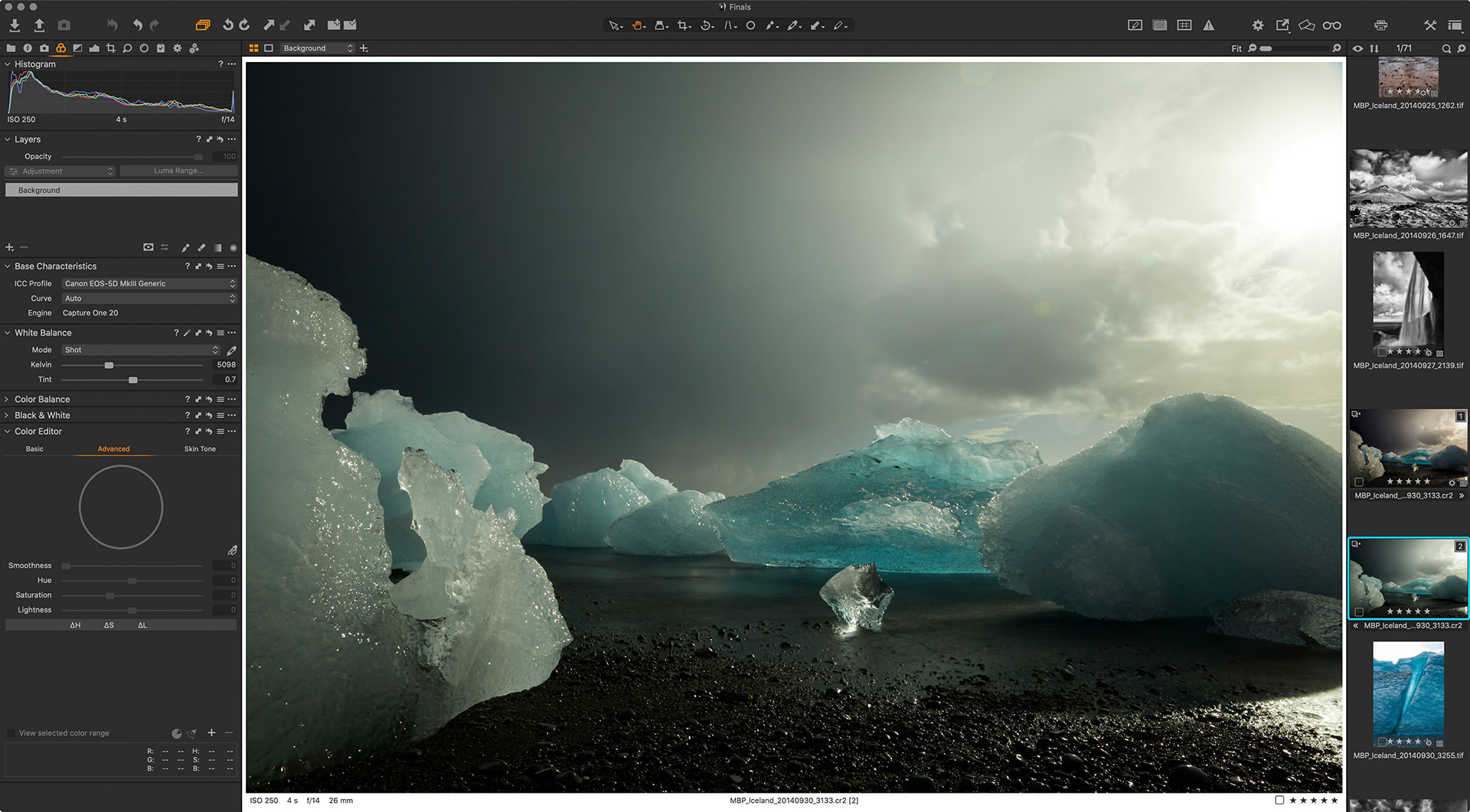Capture One can sync adjustments in a number of different and flexible ways. In this video and blog post I cover three of those that I use the most often. Read on below for a more in depth discussion of each.
- Capture One Video Editing Software
- Capture One Pro Tutorial
- Capture One For Video Editing
- Capture One Video Editing App
Go beyond the Speed Edit tool and discover the performance improvements in Capture One 21 that will make your photo editing faster. Blog Posts December 16, 2020 Explore Capture One 21 with Paul Reiffer. @sunnycal - yes, this one shows what Capture One 20 can do, and backs up with clearer evidence what you said about false vs real detail from Lightroom in the original comparison. There is a lot going on in Capture One as it first renders an image, and then a very smooth experience tuning this in any direction you prefer to go.

Flexibility and the Adjustments Clipboard
Capture One is extremely flexible, from it’s easily rearranged and customized user interface to allowing multiple ways of store your RAW files. Syncing adjustments between photos is no exception. Rather than providing a single button and large dialog box, Capture One uses the concept of an adjustments clipboard. All of the methods we will discuss rely on the adjustments clipboard so it’s important to understand it.
I assume everyone reading this understands copy-and-paste. It’s been a feature of most computer systems since pretty much the bronze age. Capture One uses a conceptually similar system. You can copy some or all of the adjustments you’ve made to one photo onto a dedicated clipboard. You can then paste (Capture One calls it Apply) those adjustments onto other photos, one at a time or in large batches. It’s also possible to combine the copy and apply steps into a single click.
How you copy the adjustments to the clipboard determines which adjustments get included.

The Adjustments Clipboard Tool Panel
Before we go to much further, it’s important to know that there is a dedicated Adjustments Clipboard tool panel that controls how adjustments are selected by default. It also gives you the ability to manually set what has been copied.
You can find this tool panel in the default workspace under the Adjustments () tool tab. It shows you which adjustments are currently on the Adjustments Clipboard. It also allows you to add or remove adjustments by unchecking the box next to each. Clicking Copy will copy the checked settings to the clipboard. Apply will directly apply the settings that are check to any additional photos selected in the Image Browser. This panel will look familiar to Lightroom users, but it is not the simple dialog box Lightroom uses so don’t be fooled.
Note the … button in the upper right corner. It includes options to determine what adjustments are automatically selected for a source image. The default is “All Adjusted” but you can also choose “All Adjusted Except Composition” which will exclude crop, rotation & key-stoning from being automatically copied and applied. You can still copy them in other ways as needed. “None” is also an option.
Capture One: Sync Adjustments

I find myself using three different methods to sync adjustments in Capture One. Each method has it’s use case. By knowing and understanding each, you can speed up your editing in Capture One.
Method 1: Copy Adjustments then Apply Adjustments
The first method for syncing adjustments is also the one I use the most. It’s to simply copy all adjustments (honoring the autoselect setting from the Adjustments Clipboard tool panel, see above) and then apply those adjustments to one or more photos.


There are 2 ways to do this. I personally use the shortcut keys. Command-Shift-C (Ctrl-Shift-C on Windows) will copy the adjustments to the clipboard. Command-Shift-V (Ctrl-Shift-V) will apply those adjustments to one or more selected photos. You can accomplish the same thing by selecting your source photo and then using the Adjustments menu to select Copy Adjustments and then Apply Adjustments.
Method 2: Copy and Apply Adjustments (via the menu)
If you prefer selecting or confirming all the adjustments that will be copied (maybe you need specific things in some cases), you can use the Copy and Apply Adjustments menu item under the Adjustments menu. This will bring up a dialog box of all possible adjustments for you to review.
Clicking “Copy” will copy those adjustments to your adjustments clipboard. Clicking apply will directly apply them to any files selected in your image browser.
Note: There is not a default shortcut key for this, but if you find yourself using it a lot, you can easily assign one in the Keyboard Shortcut Key editor found under the Edit menu.
Capture One Video Editing Software
Method 3: Copy by Individual Tool Panel
This third method is the one I consider the coolest even if I don’t use it all that much. You can easily copy and apply settings from individual tool panels as you like. Say, for example, you’ve added some specific color tinting to a photo. You could use the above 2 methods in combination with the Adjustments Clipboard tool panel to copy only those settings, but that isn’t very efficient. Instead, Capture One offers the ability to copy all or just a subset of each tool panels settings via the icon found at the top of most tool panels:
Clicking this button will bring up a tool panel specific adjustments dialog. You can enable and disable the individual sub-adjustments for that tool panel. For example, the Exposure tool panel includes Exposure, Contrast, Brightness and Saturation.
Clicking Copy places only the selected adjustments on your adjustments clipboard to be applied later (via the shortcut key Command-Shift-V or Ctrl-Shift-V, or the menu option). Clicking Apply will immediately apply those adjustments to any files selected in the image browser.
Holding the shift key while you click the icon instantly applies any adjustments done in the tool panel to the other images selected in your image browser.
Choices & What Works for You
I find that I use method 1 (via the shortcut keys) and method 3 the most frequently.
Method 1 allows you to quickly apply adjustments from one photo to one or more photos. You can easily do it by selecting the set and applying, or by using the apply shortcut key as you scroll through images. I use both methods.
Method 3 is great for easily copying the adjustments from one tool panel, say color tinting, specific color edits or a specific curve adjust, to multiple photos.
Capture One Pro Tutorial
Hopefully you find that using Capture One’s flexible methods of syncing adjustments makes your life easier, your editing faster and helps you spend more time shooting and less time editing.
Capture One For Video Editing
Andrew is a photography instructor teaching students of all skill levels in Austin, TX through Precision Camera and independently in San Diego, CA. He runs workshops around the United States.
Capture One Video Editing App
He is a self taught experiential learner who is addicted to the possibilities that new (to him) gear open up. He loves to share the things he has worked out. Andrew started with a passion for landscape and night photography and quickly branched out to work in just about every form of photography. He is an ex-software developer with extensive experience in the IT realm.
Andrew is a full time wedding and commercial photographer in both Austin and San Diego. Andrew is a club founder and multi-time past president of North Austin Pfotographic Society.
